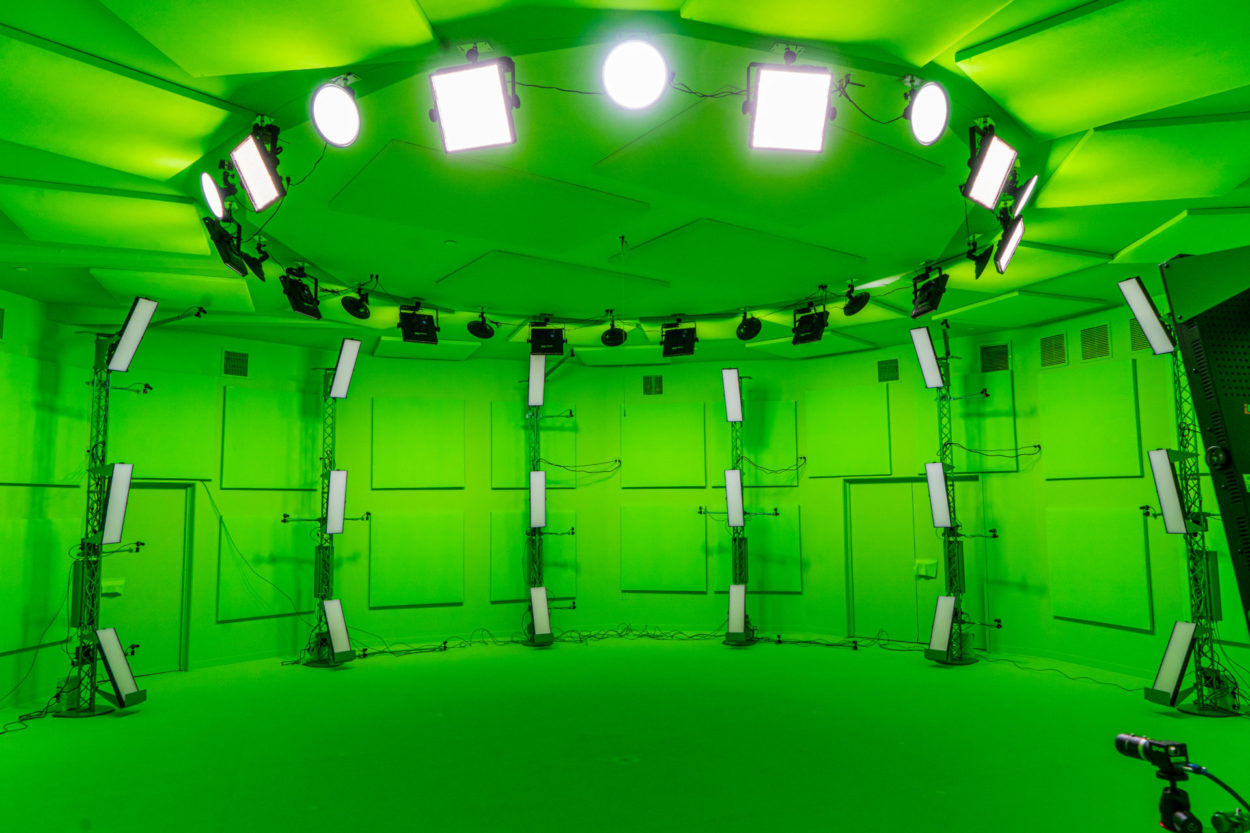
Hardware isn’t everything – in fact, all the shiny new technology doesn’t mean much when the content is not up to standard. It should be realistic as well as transferrable – meaning it has physical and psychological fidelity. As new technology becomes available, VirTra tries to keep up with it by finding the methods that provide the highest fidelity.
As detailed in a press release, VirTra has recently completed construction of a volumetric capture studio. We named this V3™ – after ‘VirTra Volumetric Video.” It is in a room that is 39 feet in diameter with 14 feet of capture space. This studio provides a controlled environment where capture can occur without worrying about conditions such as weather, lighting, background noise, or having to rent a space to film. Having less limits allows the VirTra content team to produce more content.
What is Volumetric Capture?
What makes volumetric video capture so unique is its ability to be used in either VR goggles or on flat screens. As of now, VirTra finds the current virtual reality training technology to be lacking. But one day when it is more suited to train officers and military, characters captured in the V3 studio can be transferred easily.
Volumetric video has been used in a variety of ways – ranging from entertainment to training. VirTra is the first law enforcement / military simulation company to utilize volumetric video for training first responders.
What Kind of Content Will be Created?
The V3 studio was an effort that took years to plan and months to build to perfection. The goal is to provide a more realistic take on 3D characters that can be utilized in various mediums. Typical CGI characters seen when using VR goggles show unrealistic humans that are unable to produce the same movements as real people. Volumetric video eliminates the “Uncanny Valley” effect by more accurately capturing realistic people as 3D characters.
To put it simply, VirTra will be capturing real people and inserting them into scenarios as 3D objects that can be used on both screen-based and VR platforms. It tackles the limitations of both HD video filming and CGI generation.
Is VirTra Switching to VR?
Not yet, at least. As of right now, there are some issues with VR not creating the transferability ideal for first responders. With issues such as motion sickness and problems using training firearms, we find that screen-based systems are still superior.
Despite the setbacks, we have seen virtual reality training make improvements. We believe it has potential to become a tool VirTra uses in the future. When exactly – we do not yet know.
If you would like to know more about our future plans for scenarios and content, check out our coursework here, or contact a specialist.
Recently Published
Join Our Newsletter







